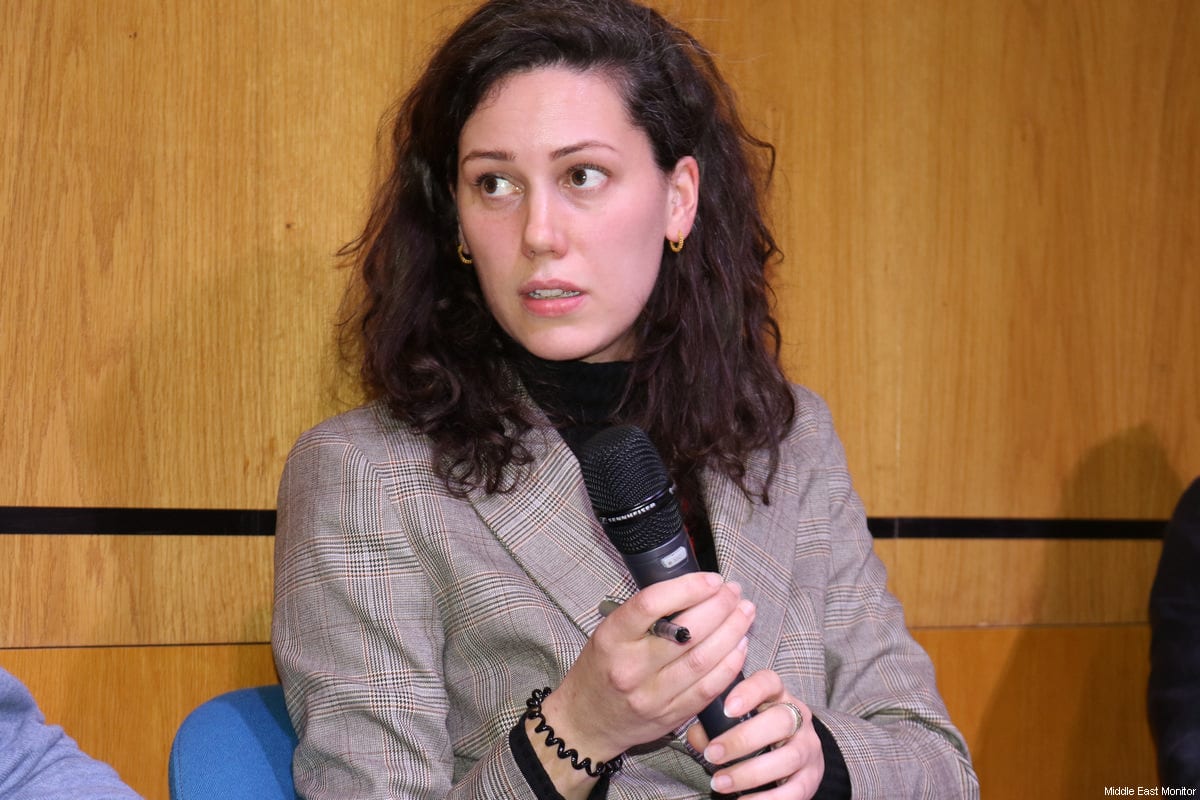On 23 June Sanaa Seif, along with her sister Mona, arrived at the Egyptian attorney general’s office to file a complaint. The night before, a group of government thugs, known as Baltagiya, had beaten them up outside Tora Prison where they were waiting to receive a letter from their brother, who has been detained inside since September.
It was there, outside the official office, that Sanaa was kidnapped by security officers, who wrestled her into a white van and took her to the State Security Prosecution where she would face a string of trumped up charges related to terrorism and spreading fake news.
Sanaa has been held in pretrial detention since then. In protest, earlier this week, some 200 artists, musicians and authors signed a statement calling on the Egyptian government to release the filmmaker, who worked on ‘The Square’ and ‘In the Last Days of the City’, and asked them to release political prisoners and end pretrial detention.
Over in the president’s office, whilst officials were punishing Safaa for her peaceful activism, they were also drawing up plans for promoting a key player in the 2013 coup. Last week, Egypt’s minister of transport announced that Zamalek metro station would be named after the former president of the Radio and Television Union, Safaa Hegazy, because she authorised the broadcast of coup leader and President Abdel Fattah Al-Sisi’s statement overthrowing Mohammed Morsi on state TV in 2013.
There was an outcry among Egyptians online, who pointed out that the metro is located in an area where prominent Egyptian females including Umm Kulthum, Soad Hosny and film producer Faten Hamama once lived and yet no station has ever been named after them.
The incident evoked memories of 2015, when it was announced that Rabaa Al-Adawiya Square, where up to 1,000 pro-democracy protesters were slaughtered during the August 2013 massacre, would be renamed after Egypt’s prosecutor general who was assassinated that June.
READ: 200 artists sign statement calling for release of Egypt political prisoner Sanaa Seif
It was Hisham Barakat who gave the green light for the Egyptian army to enter the square and break up the sit-in. Soldiers set fire to tents, shot patients in the makeshift field hospital and instructed surrounding pharmacies not to administer medicine to the wounded. It was condemned by Human Rights Watch as a crime against humanity, but that didn’t stop the scene of the crime becoming the Hisham Barakat Square.
When the government retitled the protest area, they erased the legacy of the Muslim saint and leading 9th century Sufi mystic Rabi’a Al-Adawiyya, who the square was named after. Rabi’a taught that a person’s relationship with God should be out of love, not fear and cautioned against the riches of the material world. She embodied love and devotion and symbolised resistance against corrupt governments who believed they could relay the word of God to their people.
![Sisi's Prisons - Cartoon [Sabaaneh/MiddleEastMonitor]](https://i0.wp.com/www.middleeastmonitor.com/wp-content/uploads/2020/05/Untitled-Artwork-1.jpg?resize=920%2C575&ssl=1)
Sisi’s Prisons – Cartoon [Sabaaneh/MiddleEastMonitor]
On 24 July, a father from Al-Maasara village in Minya governorate, Upper Egypt, woke up, took his three young children to the side of a train track and threw them in front of a moving train. Rescue workers describe clearing the limbs of eight-year-old Menna, six-year-old Amr and four-year-old Khadija, who were found dismembered at the scene.
Egypt: Sisi orders metro station be named after Safaa Hegazy because she broadcast coup statement
Within the space of a few weeks, another father committed suicide after he was unable to pay for treatment for his three children who had a rare genetic disease; another set fire to his house killing his mother, wife and three daughters, reportedly after a dispute over expenses. Although there is no justification for someone who has taken innocent lives, it is possible to say that the actions taken by these individuals are a symptom of another prominent feature of modern Egypt’s legacy: poverty as a result of excessive corruption. These tragedies not only reveal the real Egypt, but will continue for as long as the government represses its own people.
Despite the fact that Al-Sisi rose to power on a promise he would reform the economy, he has instead crashed it into the ground. Under the current regime Egypt has liberalised the exchange rate and with that sparked soaring inflation; debt has risen, goods are unaffordable and salaries are stagnant whilst unemployment is prevalent. In contrast, his close circle live in opulent luxury, as was revealed by the Egyptian whistleblower and army contractor Mohammed Ali.
Whilst the Egyptian regime desperately tries to rewrite history and manufacture a bold legacy, the only people who are listening are Western governments, who continue to strike excessive deals with the regime, rather than hold it to account for its human rights violations. Whether it’s over political prisoners, corruption, sexual harassment, the Renaissance Dam or war in Libya, people have taken to social media in the thousands to express anger at how the government has navigated these crises, and the regime is struggling to silence them.
The views expressed in this article belong to the author and do not necessarily reflect the editorial policy of Middle East Monitor.

![Demonstrators protest against Egypt's President Abdel Fattah el-Sisi ahead of his visit to meet Prime Minister David Cameron in Downing Street on 5 November 2015 in London, England. [Carl Court/Getty Images]](https://i0.wp.com/www.middleeastmonitor.com/wp-content/uploads/2020/08/GettyImages-495826090.jpg?fit=920%2C613&ssl=1)







